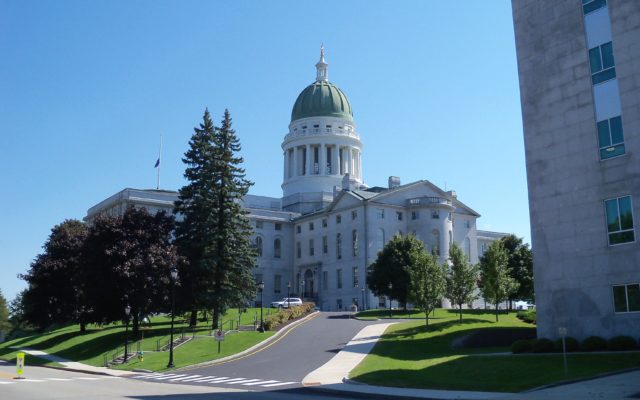
Maine’s southern population shift will remake state politics
By Jessica Piper, Bangor Daily News Staff
Maine will need to move roughly 23,000 people into the swing 2nd Congressional District from the reliably liberal 1st District after much of northern and western Maine lost population over the past decade.
The release of new data from the U.S. Census Bureau on Thursday started a 45-day window for the state’s independent redistricting commission to finish new maps for the two congressional districts along with Maine’s 186 legislative districts. The panel has until late September to form a plan after the state’s high court extended its deadline due to pandemic census delays.
Maine’s overall population still grew by 2.6 percent over the past decade, driven by strong gains in Cumberland and York counties, according to U.S. Census data released Thursday that is the basis for this year’s redistricting.
But the diverging trends in different parts of the state still reflect the phenomenon of the so-called “two Maines,” with southern and coastal parts of the state growing while typically lower-income inland towns lose population. The redrawing of districts is likely to make the 2nd District marginally more Democratic. Many legislative districts will see substantial changes after redistricting, which will shift the state’s political conversation.
Maine’s two congressional districts had virtually identical populations following redistricting after the 2010 Census at just over 664,000 each. But they diverged sharply over the past decade, with the 1st District growing to roughly 704,000 residents with 658,000 in the 2nd District, the Census found.
That means the apportionment process will require shifting, on net, about 23,000 people from the 1st District to the 2nd District. There is no legal requirement that new districts resemble old districts, but lawmakers are unlikely to make dramatic changes. The most likely outcome involves swapping parts of Kennebec County, the only one split between districts.
Possible candidates to switch include Waterville, population 15,828, and Winslow, population 7,948, which were both in the 2nd District prior to redistricting after 2010. But there are many other ways the commission could go while keeping boundaries contiguous, including moving Augusta suburbs including Winthrop, Readfield, Manchester, Farmingdale, Hallowell and Pittston to the 2nd District, or moving some one way and others another.
The changes seem likely to make the 2nd District at least marginally more friendly for Rep. Jared Golden, a Democrat who is a top target for national Republicans in the conservative-leaning district. Three Republicans, including former Rep. Bruce Poliquin, who lost to Golden in 2018, are currently running to unseat him.
Six Kennebec County towns in the 1st District went for former President Donald Trump in last year’s election, but moving all of them over would create contiguity problems. Several more liberal towns are better located to switch, though there will be many options for the commission to consider.
The commission must also draw new state legislative boundaries. Maine’s 35 Senate districts should all end up with a population just shy of 39,000. Getting every district close to that total will require changes with currently drawn districts in Aroostook and Washington counties at less than 35,000 and several districts in Cumberland County with more than 40,000.
Senate District 30, which covers Gorham and parts of Scarborough and Buxton and is currently represented by Sen. Stacy Brenner, D-Scarborough, is now the most populous at 44,712. District 1, represented by Senate President Troy Jackson, D-Allagash, and covers the western half of Aroostook County, has only 33,861 people.
Maine’s 151 State House districts must get close to an average of just over 9,000. As districts are currently drawn, populations range from 7,801 in District 122, which covers Old Town and Indian Island, to 11,587 in District 28, which covers part of Scarborough.
The House districts with the largest populations are in Cumberland and York counties, while the smaller districts are scattered across Somerset, Penobscot, Piscataquis and Aroostook counties. That suggests districts may need to be created in southern Maine, while districts in northern and western parts of the state will be condensed.
There are practically infinite ways the legislative districts could be redrawn. Lawmakers typically aim to avoid drawing districts in a way that would force incumbents to run against one another whenever possible. Maine law requires districts to be contiguous, compact and divide as few municipal boundaries as possible.
Maine’s redistricting process, with maps requiring a two-thirds approval in the Legislature, makes it difficult for legislators to push extreme maps that heavily favor one party over the other, as sometimes seen in other states. If lawmakers cannot make a deal, Maine’s high court will draw the new boundaries.
Fair maps should aim to maximize the number of competitive seats and be responsive to swings in the electorate, so that if either party has an especially good election, they pick up many seats, said Adam Podowitz-Thomas, a legal advisor at the Princeton Gerrymandering Project, which conducts analyses of maps to try to eliminate partisan gerrymandering.
“We’re not as focused on the way the lines look and much more interested in the data behind the lines,” he said.